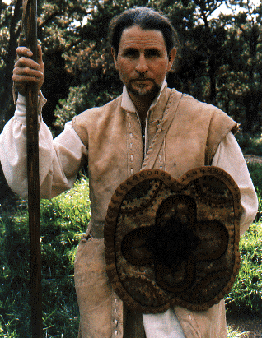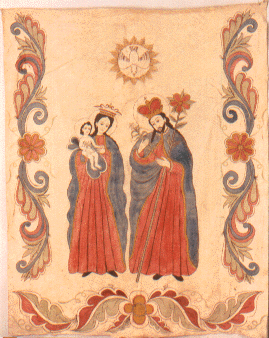
© Ramón José López

© Ramón José López
Soldado de Cuero / Leather Jacket Soldier's Suit, 1996
Brain tanned buffalo hide and buffalo sinew
Collections of the Palace of the
Governors, Santa Fe
Continuing to push boundaries, López created an entire outfit for a colonial soldier of the early 18th century. He prepared the leather (including buffalo bladders made into canteens), cut the pattern and sewed together the pieces with buffalo sinew, based on renderings in the historic Segesser hide paintings. Both the outfit and the Segesser paintings are in the collections of the Palace of the Governors.
La Sagrada Familia / The Holy Family, 1994
Water
soluble pigments on brain tanned buffalo hide
Collections of the Spanish Colonial
Arts Society, Inc.
Paintings of religious subjects on tanned animal hides are some of the earliest documented images made in the Spanish colonial era in New Mexico. Painted tanned hides were exported to Mexico as early as the 1630s. Antas blancas was the term frequently used for hides intended to be painted; anta means elk or moose. In this case the artist used buffalo (cíbolo) hide.